Hi Luis, and thanks. Luis and I have communicated via PM, and after looking over his concerns I have to take back what I said about mushroom valves verses the duckbill. My demonstration should be looked at as only applying to clearing the breathing loop of water (we do that sometimes  ); apparently air acts much differently in the loop. To me, as a non-engineer, it seemed to be applicable to air. As I have come to realize, that impression can be incorrect.
); apparently air acts much differently in the loop. To me, as a non-engineer, it seemed to be applicable to air. As I have come to realize, that impression can be incorrect.
I still prefer the duckbill to the mushroom valve for breathing resistance, and at times will use a mouthpiece without non-returns (especially my Healthways mouthpiece, as it is quite small in comparison to the USD/AMF Voit mouthpieces). When we went through the U.S. Navy School for Underwater Swimmers (1967) we were not allowed to use the mouthpiece non-return valves. This was a three-week course, and in our third week some of us sneaked non-return valves into our mouthpiece prior to some of our qualification dives.
Here is the DX Overpressure Breathing mouthpiece (predecessor to the Mistral). It is a metal mouthpiece without a non-return in the exhalation side. It actually did have a non-return in the inhalation side, but it was a very unusual ring-style piece of rubber with two retainer "posts" (for lack of a better word).
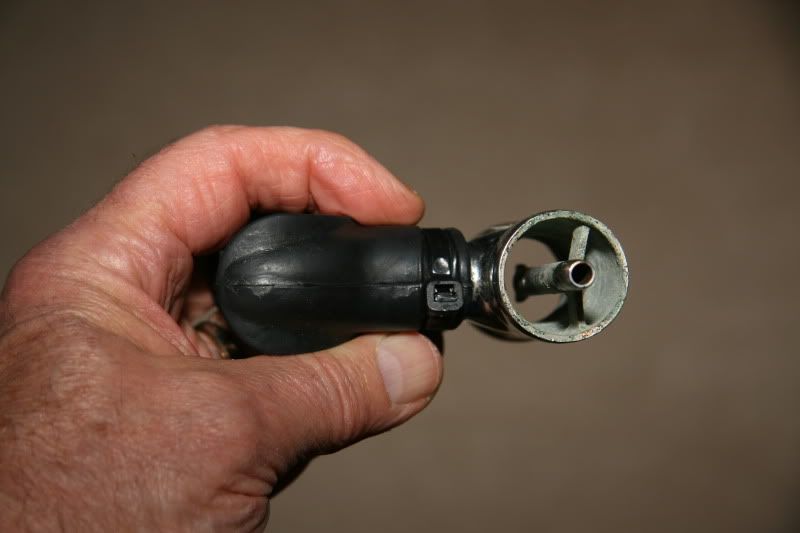
Without the non-return ring.
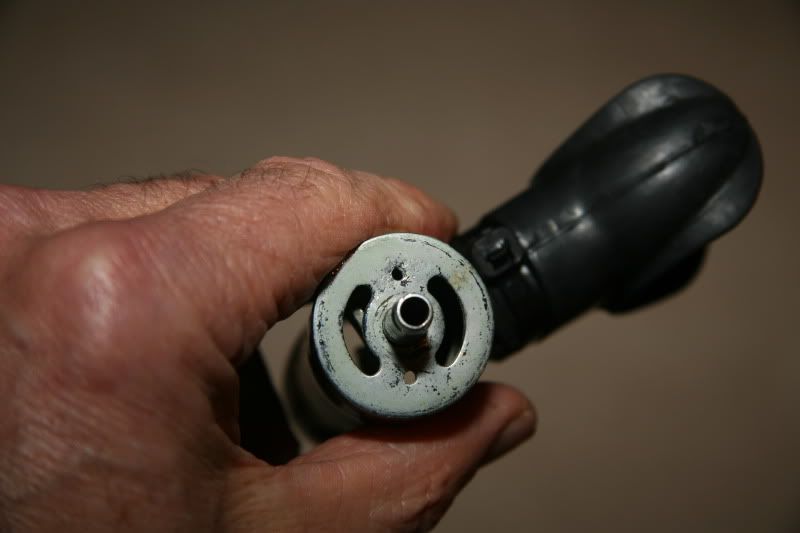
With the non-return ring, which is how I did it as without this the venturi would be too great.
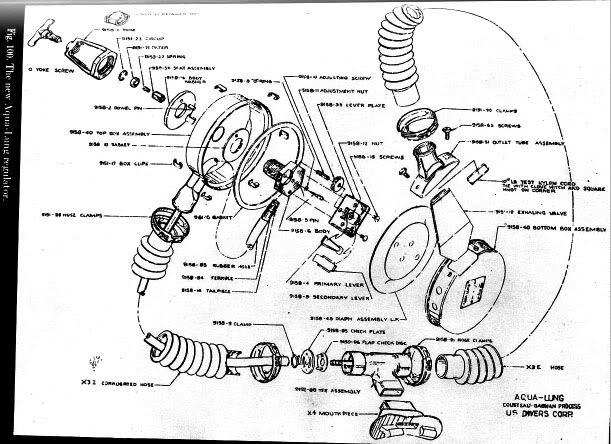
DX Overpressure Breathing regulator diagram, showing the hose-within-a-hose concept.
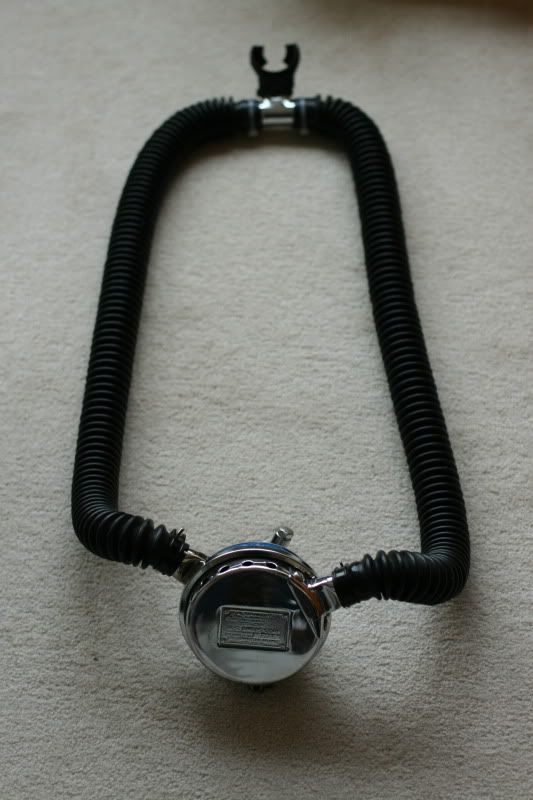
The Healthways mouthpiece on the later Scuba Gold Label regulators was much smaller than the USD mouthpieces. The following photo shows it in comparison to the Hope-Page mouthpiece, which is the first modern mouthpiece and was used on USD double hose regulators until they developed the Kleer-EZ Mouthpiece (which we now call the "straight" mouthpiece).
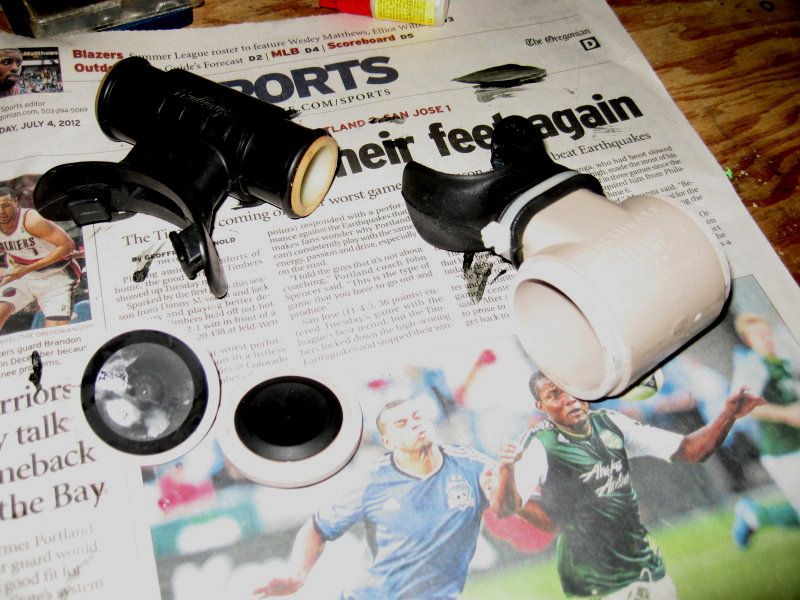
I found that this Healthways mouthpiece only delivered sufficient air if I removed the wagonwheel cages completely and used it with only the internal baffle plate.
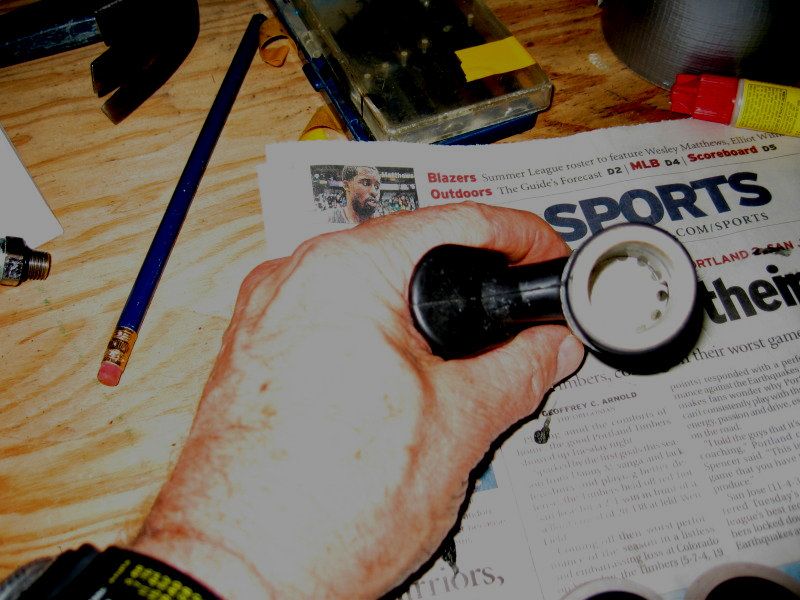
Hope this helps the Mistral discussion.
SeaRat
I still prefer the duckbill to the mushroom valve for breathing resistance, and at times will use a mouthpiece without non-returns (especially my Healthways mouthpiece, as it is quite small in comparison to the USD/AMF Voit mouthpieces). When we went through the U.S. Navy School for Underwater Swimmers (1967) we were not allowed to use the mouthpiece non-return valves. This was a three-week course, and in our third week some of us sneaked non-return valves into our mouthpiece prior to some of our qualification dives.
Here is the DX Overpressure Breathing mouthpiece (predecessor to the Mistral). It is a metal mouthpiece without a non-return in the exhalation side. It actually did have a non-return in the inhalation side, but it was a very unusual ring-style piece of rubber with two retainer "posts" (for lack of a better word).

Without the non-return ring.

With the non-return ring, which is how I did it as without this the venturi would be too great.

DX Overpressure Breathing regulator diagram, showing the hose-within-a-hose concept.

The Healthways mouthpiece on the later Scuba Gold Label regulators was much smaller than the USD mouthpieces. The following photo shows it in comparison to the Hope-Page mouthpiece, which is the first modern mouthpiece and was used on USD double hose regulators until they developed the Kleer-EZ Mouthpiece (which we now call the "straight" mouthpiece).

I found that this Healthways mouthpiece only delivered sufficient air if I removed the wagonwheel cages completely and used it with only the internal baffle plate.

Hope this helps the Mistral discussion.
SeaRat



